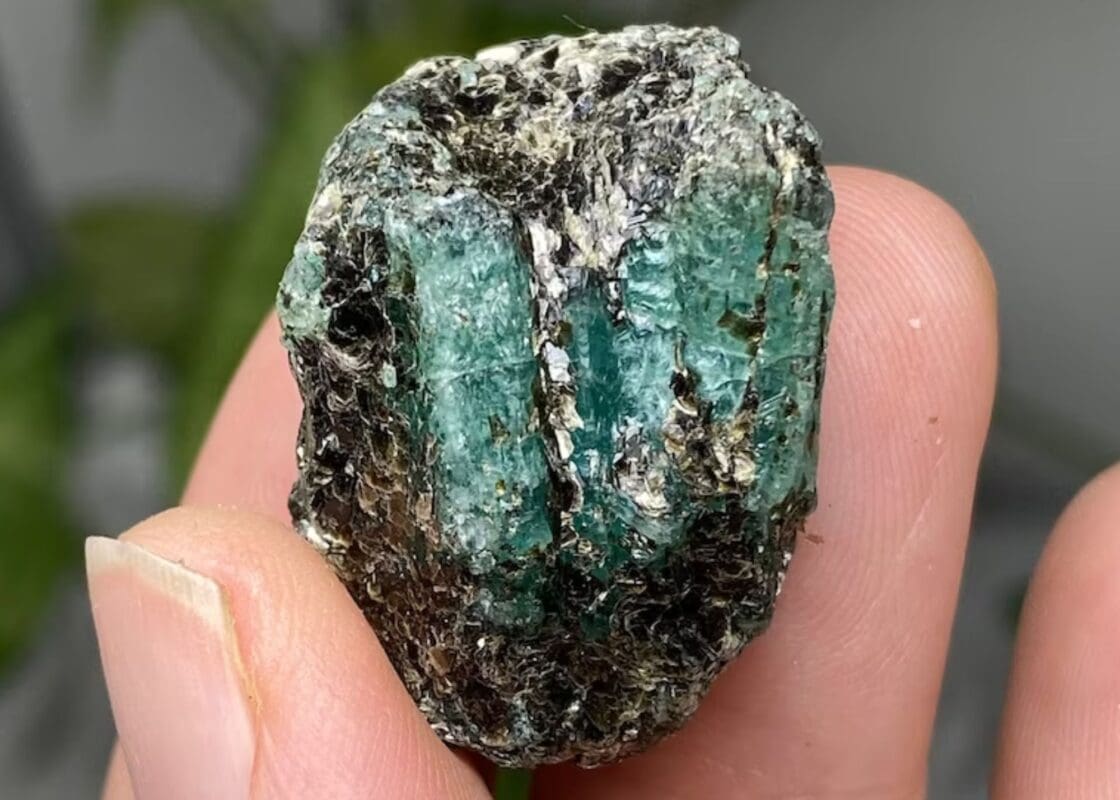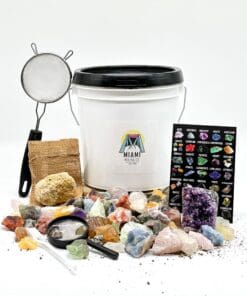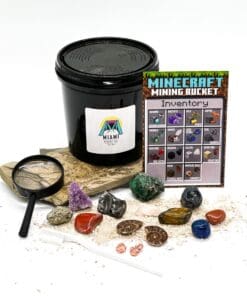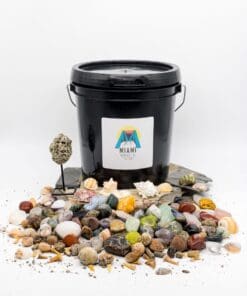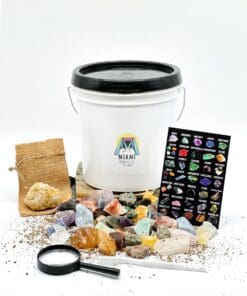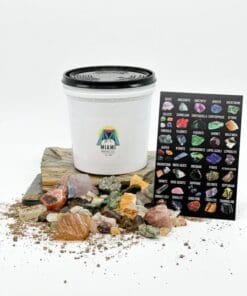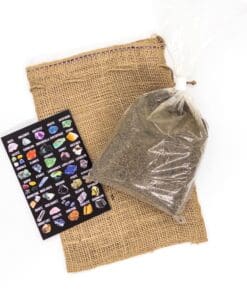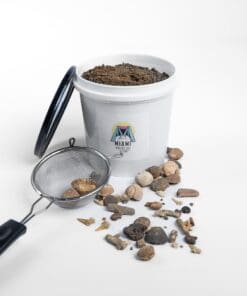Exploring Gem Mining Sites in North Carolina: Gem Hunter’s Paradise
Gem mining in North Carolina is not just a pastime, it’s a tradition. Rooted deeply in the state’s history and culture, it offers both amateur and professional prospectors the chance to uncover hidden treasures from the Earth. Whether you’re passionate about geology or just looking for a unique family adventure, this article will guide you through the sparkling world of gem mining in North Carolina
The Most Popular Gemstones in North Carolina
The Tar Heel State is renowned for its diverse and rich gem deposits. Let’s break down the gems found in North Carolina into two categories: rare and common. The following tables give a glimpse of these treasured finds.
Rare Gemstones in North Carolina:
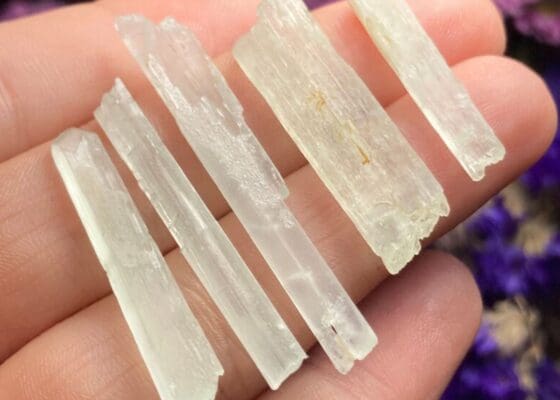
| Gemstone | Description |
|---|---|
| Hiddenite | A greenish variety of spodumene exclusive to North Carolina, named after the town of Hiddenite where it’s found. |
| Blue Garnet | Although garnets are common, the blue variety is extremely rare, with North Carolina being one of its few sources. |
| Red Emerald | A scarce bixbite gemstone, distinct from the green emerald, offering a radiant red hue. |
| Star Ruby | A ruby that displays a star-like pattern on its surface when polished due to its unique crystalline structure. |
| Rhodolite | A rose-red to purple variety of garnet, first discovered in Macon County and unique in its vibrant hue. |
Common Gemstones in North Carolina:
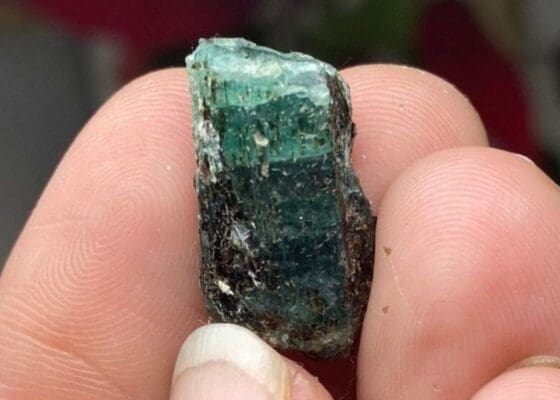
| Gemstone | Description |
|---|---|
| Quartz | This abundant mineral comes in many colors and forms, including amethyst and citrine. |
| Emerald | Known for its green hue, North Carolina’s emeralds are among the most sought after in the gem market. |
| Sapphire | Found in various colors, these are commonly located in the state’s western regions. |
| Ruby | Primarily found in the western counties, these red gemstones are prized for their beauty. |
| Garnet | Typically red or brown, they are widespread in North Carolina and are used both as gemstones and industrial abrasives. |
| Aquamarine | A blue to greenish-blue variety of beryl, it’s often mistaken for blue topaz. |
| Tourmaline | This mineral comes in a range of colors, with pink and green being the most common in North Carolina. |
| Moonstone | With an ethereal shimmer, this gem is found in the pegmatites of the state. |
| Kyanite | Often found in long bluish crystals, this mineral is used in various industrial applications and jewelry. |
| Gold | While not a gemstone, gold is a significant find in North Carolina, historically driving its mining industry. |
Gemstone aficionados and casual collectors alike will find North Carolina’s geology and mineral offerings rich and fascinating. The state’s diverse range of gems, from the widely recognized to the incredibly rare, means that every mining trip has the potential to unearth something truly special.
Top Gem Mining Locations in North Carolina

- Emerald Hollow Mine in Hiddenite: Often touted as the only emerald mine in the world open to the public, this mine is a must-visit. It’s located at 484 Emerald Hollow Mine Dr, Hiddenite, NC 28636. Their operating hours vary by season, so it’s recommended to check their website or call ahead. There’s an admission fee which includes access to the mining area and sluiceways.
- Mason’s Ruby and Sapphire Mine in Franklin: An authentic mining experience awaits you here. Located at 6961 Upper Burningtown Rd, Franklin, NC 28734, the mine is open from April through October from 9:30 AM to 5 PM. The fees are determined by the type and amount of material you choose to mine.
- Cherokee Ruby & Sapphire Mine in Franklin: Another gem from Franklin, this mine is known for its high-quality gem finds. Its address is 41 Cherokee Mine Rd, Franklin, NC 28734. They operate from May to October, usually from 9 AM to 4 PM. They offer various bucket sizes, each with its own fee.
- Gem Mountain in Spruce Pine: This site offers not just mining but also gemstone cutting and setting. Located at 13780 NC-226, Spruce Pine, NC 28777, it operates mainly during the warmer months. Check their website for hours and fees.
- Sheffield Mine in Franklin: Known for its star rubies, you can find this mine at 385 Sheffield Farms Rd, Franklin, NC 28734. They operate from April to October, with varying hours. A flat fee is charged for all-day digging.
- Elijah Mountain Gem Mine in Hendersonville: Suitable for families, this site at 2120 Brevard Rd, Hendersonville, NC 28739 offers both indoor and outdoor mining. They are open year-round, with hours typically from 10 AM to 5 PM. Fees are based on the type and size of the gem bucket you choose.
- Rose Creek Mine in Franklin: Offering a peaceful mining experience, it’s located at 115 Terrace Ridge Dr, Franklin, NC 28734. They’re open from March to December, and fees are charged based on the material you decide to mine.
- Foggy Mountain Gem Mine in Boone: Located at 4416 NC-105, Boone, NC 28607, this mine offers a range of gems, including emeralds, sapphires, and rubies. They’re open seasonally, so checking ahead is advised. Fees depend on the bucket size and type.
- Thermal City Gold Mine in Rutherfordton: While primarily known for gold panning, gemstones are also found here. The address is 5240 US-221 N, Rutherfordton, NC 28139. They operate from March to October, with hours and fees available on their website.
- Sandy Creek Mining Company in Denton: Though it offers a more commercialized experience, it’s great for families and beginners. Located inside the Denton Farmpark at 1072 Cranford Rd, Denton, NC 27239, it operates in conjunction with park hours. Fees are charged based on mining kits.
Each of these locations provides a unique mining experience, with varying degrees of authenticity and amenities. Whether you’re looking for a rugged adventure or a family-friendly day out, North Carolina’s gem mines cater to all. Always remember to check ahead for operating hours and fees before planning your visit.
History of Gem Mining in North Carolina

North Carolina’s rich tapestry of gem mining is woven with stories of discovery, ambition, and passion. This state has witnessed centuries of miners, from indigenous peoples to European settlers, seeking its buried treasures.
Gem mining in North Carolina predates recorded history. Native Americans held these precious stones in high regard, utilizing them for trade, rituals, and adornment. For these early inhabitants, gems held spiritual significance, and areas abundant with gemstones were often considered sacred.
The true turning point in the state’s gem mining history, however, came in the early 19th century. In 1799, young Conrad Reed stumbled upon a 17-pound gold nugget while playing at his family’s farm in Cabarrus County. Initially used as a doorstop, it wasn’t until 1802 that a jeweler recognized its value, marking the beginning of America’s first gold rush. While gold fever took over, it paved the way for other mineral and gemstone explorations.
The subsequent decades witnessed an influx of miners and prospectors, especially in the western regions. Towns like Franklin became bustling centers of gem trade, leading to the moniker “Gem Capital of the World.” By the late 19th century, North Carolina was renowned for its rich deposits of emeralds, rubies, sapphires, and more.
As the years progressed, the gem industry saw both booms and lulls. Factors such as industrialization, technological advancements in gem extraction, and global competition played roles in shaping the landscape. Yet, the spirit of gem hunting never waned. Today, many mines, both active and abandoned, serve as nostalgic reminders of this glittering era.
One of the most endearing aspects of this history is how it has transitioned into a cherished recreational activity. Families, tourists, and amateur geologists flock to the state’s mines, hoping to catch a glint of the past and perhaps find a gem of their own. The allure of gem hunting is as much about connecting with history as it is about the thrill of discovery. The legacy of North Carolina’s gem mining is not just in its vibrant gemstones but also in the memories forged in the heart of its mountains.
Gem Mining Regulations in North Carolina

In the pursuit of unearthing precious gemstones, it’s essential for miners, both seasoned and novice, to be familiar with North Carolina’s mining regulations. These rules serve not only to preserve the state’s rich natural resources but also to ensure the safety and rights of all parties involved.
First and foremost, it is vital to understand that not all lands in North Carolina are open for gem mining. Public lands, like national parks and forests, often have strict regulations against collecting minerals, rocks, and gemstones. Unauthorized mining in such areas can lead to hefty fines and legal actions. Always check with the managing agency of the land before considering any mining activities.
On the flip side, numerous privately-owned mines offer public mining for a fee. These “fee mines” operate under different sets of rules, established by the individual proprietors. While they provide tools, equipment, and designated mining areas, miners should be mindful of the guidelines and restrictions set by the mine owners. Any failure to adhere can result in expulsion or additional charges.
Then there’s the matter of claims. In certain areas, specific plots of land, known as claims, are leased to individuals or groups for mining purposes. If you’re considering gem hunting on claimed land, securing permission from the claim owner is paramount. Trespassing on active mining claims is illegal and can have legal consequences.
Environmental considerations also play a significant role in gem mining regulations. Overzealous mining can lead to soil erosion, deforestation, and waterway contamination. To counter these effects, the North Carolina Department of Environmental Quality has set guidelines that all miners, commercial and recreational, must follow. This includes regulations on the use of chemicals, disposal of waste, and land reclamation post-mining.
Safety, too, is a primary concern, and there are protocols in place to ensure the wellbeing of miners. Mines, especially those open to the public, must meet specific safety standards and are often subject to inspections.
Finally, there’s the matter of selling and trading the gemstones you unearth. While personal finds are typically free from any restrictions, selling large quantities or rare gemstones may require permits or licenses, depending on local and state laws.
In essence, while the gleam of gemstones beckons many to North Carolina’s mineral-rich lands, understanding and respecting the intricate web of regulations is key. It ensures that the tradition of gem hunting can be passed down, all while preserving the state’s natural splendor and heritage.
Necessary Tools and Equipment for Gem Mining in North Carolina
Gem mining, a blend of patience, skill, and a bit of luck, is complemented greatly by the right tools and equipment. Just as a craftsman is incomplete without his toolkit, a gem hunter’s success often hinges on having the right gear at hand. In the varied terrains and mines of North Carolina, here’s a guide on what equipment to bring for a fruitful gem mining expedition.
1. Screening and Classifying Tools: Reveal those hidden treasures!
Description: Often called classifiers or sifters, these are essential for washing and filtering gem-bearing soil. They consist of a set of screens of varying mesh sizes. As you shake the kit, the finer soil particles fall through, leaving potential gemstones behind.

🛒 Explore Top Screening Sets on Amazon
2. Shovels and Trowels: Digging deep or just scratching the surface?
Description: For those intricate tasks, small handheld tools like trowels or picks become indispensable. They’re perfect for chipping away at rocks or digging in crevices where larger tools can’t reach.

🛒 Find Quality Shovels and Trowels on Amazon
3. Picks and Hammers: The backbone of any gem hunting endeavor.
Description: For those venturing into areas with exposed bedrock or larger rock formations, a geological hammer is indispensable. It aids in breaking apart rocks to reveal potentially gem-rich veins within.

🛒 Check Out Best Picks and Hammers on Amazon
4. Buckets: Your trusted companion for carrying treasures.
Description: Fundamental to any mining adventure, sturdy buckets to carry dirt and gravel from mining sites. Many fee mines provide these, but bringing your own ensures quality and durability.

🛒 Shop for Reliable Buckets on Amazon
5. Magnifying Glass: Every detail counts!
Description: A jeweler’s loupe or a simple magnifying glass helps in closely inspecting and identifying potential gemstones on the spot.

🛒 Grab Your Magnifying Glass on Amazon
6. Guidebooks and Field Guides: Knowledge at your fingertips.
Description: Especially for beginners, a pocket guide on gemstones found in North Carolina can be invaluable. It aids in the identification process and offers insights into where certain gems might be more prevalent.

🛒 Discover the Best Field Guides on Amazon
7. Containers and Bags: Organize, store, and flaunt your finds.
Description: As you collect specimens, having durable bags or containers prevents damage to your finds and makes it easier to carry them.

🛒 Shop for Storage Solutions on Amazon
8. First Aid Kit: Better safe than sorry!
Description: Mining can have its minor mishaps. Having a basic first-aid kit on hand, equipped with band-aids, antiseptics, and pain relievers, is a smart move.

🛒 Secure Your First Aid Kit on Amazon
When venturing into North Carolina’s gem-rich lands, being well-equipped is half the battle won. It enhances the mining experience, increases the chances of unearthing treasures, and ensures safety during the pursuit.
Tips and Tricks for Successful Gem Mining in North Carolina

North Carolina, with its abundance of gem-rich terrains, beckons many a hopeful prospector. Yet, to turn hopes into gleaming treasures, one must blend the romance of the hunt with practical know-how. Here are some pointers to ensure a fruitful gem mining excursion in the Tar Heel State:
- Research Before You Reach: Before heading out, familiarize yourself with the types of gems common to the region you plan to visit. This gives you a clearer idea of what to look out for, aiding identification amidst the myriad of rocks and minerals.
- Visit After Rains: While a wet day might seem counterintuitive, rain can wash away topsoil, making surface gems more visible. The glisten of a wet gemstone is also easier to spot compared to its dusty counterpart.
- Start Early: Many mines fill up fast, especially during peak season. An early start ensures a good spot, and the cool of the morning makes for more comfortable digging.
- Seek Advice: Interact with seasoned miners or mine employees. Their experience can offer invaluable insights, like which spots have been particularly rewarding or techniques to employ.
- Layered Approach: Instead of randomly digging deep, consider skimming off the top layers first. Some gems are surface-bound, and you might strike luck without much effort.
- Take Breaks: Patience is key in gem hunting. Taking short breaks not only reduces exhaustion but also rejuvenates your enthusiasm, allowing a fresh set of eyes to spot things previously overlooked.
- Safety First: Never venture into restricted areas, even if they seem promising. Stick to designated mining zones, and always be aware of your surroundings.
- Document Finds: Keeping a record of where and what you find can be useful for future trips. It can help identify patterns or hotspots worth revisiting.
- Stay Hydrated and Sun-Safe: Given the outdoor nature of gem hunting, always have water at hand. Sunscreen, hats, and protective clothing shield you from the sun’s harsh rays, ensuring a prolonged and pleasant mining experience.
- Consider Group Mining: Joining a group or guided mining tour has its perks. Collective knowledge, shared equipment, and the camaraderie of celebrating finds together can enhance the overall experience.
In gem mining, as with many things, the journey is as important as the destination. While the thrill of discovery is undeniable, it’s the memories forged, the skills honed, and the tales spun around campfires that make gem hunting in North Carolina an adventure worth undertaking.
Handling Your Gemstone Finds
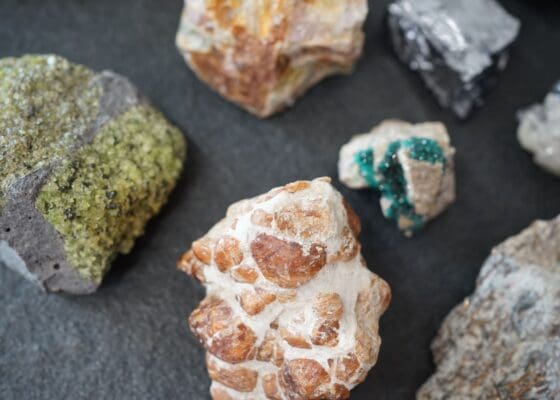
The thrill of uncovering a gemstone, glistening and untouched, is unparalleled. Yet, once unearthed, these treasures require careful handling to retain their allure and value. Here’s a guide on managing your gemstone finds, from the moment they emerge from the earth to their place of pride in your collection.
- Immediate Cleaning: Begin by gently removing any loose dirt or mud with your hands or a soft brush. Use water to wash away stubborn dirt, but avoid chemicals, as they might react with the stones.
- Storage: While on the field, keep your finds in a padded box or pouch to prevent scratches. Once home, allocate a designated space. Individual compartments or boxes for different gem types prevent them from rubbing against each other.
- Identification: Especially if you’re a novice, consider getting your finds examined by a gemologist. They can verify the authenticity, quality, and potential value of your stones. Many local gem shops in North Carolina offer such services.
- Cutting and Polishing: Some gems may benefit from professional cutting or polishing to enhance their appearance. This process can accentuate colors, improve clarity, or highlight unique inclusions. However, it’s essential to approach reputable lapidaries to avoid damaging the stone.
- Display: For those particularly proud of their finds, consider creating a display case. Labeling each gem with its name, location of find, and date can add a personal touch. Ensure the case is in a location safe from direct sunlight, which can fade certain stones.
- Maintenance: Over time, dust and oils from handling can dull the sparkle of your gems. Clean them with lukewarm water, mild soap, and a soft brush. Always research cleaning methods for specific gem types to prevent accidental damage.
- Documentation: Maintain a journal or log of your mining adventures. Documenting where, when, and what you found can be valuable for future trips or for sharing experiences with fellow enthusiasts.
- Value Appraisal: If you believe you’ve stumbled upon a particularly valuable stone, consider getting it appraised. Certified appraisers can provide a monetary estimate, crucial if you ever decide to sell or insure your find.
- Learning Opportunities: Join gem and mineral clubs or societies in North Carolina. Sharing your finds, learning from seasoned members, and participating in group outings can greatly enrich your gem hunting journey.
- Ethical Considerations: If you ever decide to sell your finds, ensure full transparency about the gem’s origins and any treatments it might have undergone.
Your gemstones are tangible memories of your adventures in North Carolina’s rich terrains. Treating them with care ensures they remain radiant mementos for years to come, preserving the thrill of discovery and the tales of the hunt.
Famous Gemstone Finds in North Carolina
North Carolina’s rich geology has led to some of the most remarkable gemstone discoveries in the United States. These iconic finds have not only captured the imagination of many but also etched the state’s name in the annals of gemological history. Here’s a dive into some of the most storied gemstone discoveries in the Tar Heel State:

- The Star of North Carolina: This massive sapphire, weighing over 1,700 carats in its rough form, was discovered in 1964. Once polished, it revealed a stunning six-rayed star pattern, a characteristic of top-quality star sapphires. Today, it stands as one of the world’s largest star sapphires.
- The Carolina Emperor Ruby: Unearthed in the Cowee Valley, this ruby, weighing approximately 310 carats in its rough form, is one of the largest ever found in North America. It has been transformed into several cut gemstones, the largest being a 64-carat cushion-cut gem.
- Queen’s Delight Emerald: At a whopping 310 carats, this emerald found in the Hiddenite area of North Carolina was a testament to the state’s mineral wealth. Notably, it was discovered by a weekend prospector, highlighting the unexpected surprises the state’s mines can offer.
- The Eagle Ruby: Weighing in at 139 carats, this ruby, discovered in 1882, solidified North Carolina’s reputation as a haven for precious gemstones. The Eagle Ruby is particularly cherished for its deep red hue and near-flawless clarity.
- Hiddenite Gems: Hiddenite, a rare green gem variety of spodumene, was first discovered in (and named after) the town of Hiddenite, North Carolina. The discovery of this unique gem further diversified the state’s mineral portfolio, drawing gem enthusiasts from all corners.
- Golden Beryl Finds: While emeralds often steal the limelight, North Carolina is also home to golden beryl, a beautiful yellow gemstone. Several significant finds, such as a 59-carat gemstone in the Crabtree Creek area, have celebrated the state’s colored gemstone diversity.
- Giant Garnets: In 1893, a massive garnet weighing over 2,800 carats was found near Ruby City. This extraordinary find showcased the breadth of gem types that North Carolina’s lands harbor.
The allure of North Carolina’s gem mines lies not just in the potential treasures they hold but also in the stories of past discoveries. These tales of legendary gems, often found unexpectedly, inspire dreams and fuel the hope that the next big find could be just a shovel away.
Additional Gem Mining Opportunities

North Carolina’s gem-rich terrains undoubtedly beckon many. But if you’re keen on expanding your gem hunting adventures, several neighboring states also offer promising opportunities. Here’s a quick look at them:
- Virginia Gem Mining: Just to the north of North Carolina, Virginia is home to diverse minerals, including amazonite, garnets, and the unique unakite stones.
- South Carolina Gem Mining: To the south, South Carolina offers a variety of gem-hunting spots known for amethysts, garnets, and gold.
- Georgia Gem Mining: Further south from North Carolina, Georgia has renowned locations for amethysts, garnets, and the much-sought-after Georgia star rose quartz.
- Tennessee Gem Mining: To the west, Tennessee boasts a range of sites for sapphires, rubies, and the state’s beautiful freshwater pearls.
- West Virginia Gem Mining: Located northwest of North Carolina, West Virginia is known for its corundum deposits, as well as fluorite and quartz varieties.
Exploring these states further diversifies the gem hunting experience and offers a broader palette of minerals and environments. Whether you’re in it for the thrill of discovery or the beauty of the gems, the American Southeast has much to offer.
Step up your gem mining game with insights from our comprehensive Gem Mining Near Me guide.
The Lure of Gems and At-Home Adventures
North Carolina’s tapestry of gem-laden landscapes, steeped in history and rich in diversity, has drawn many to its enchanting embrace. The allure of gem hunting here isn’t just about the shimmering treasures waiting to be unearthed; it’s also about the adventure, the anticipation, and the tales that come with every discovery. Each find, be it a glinting sapphire or a modest quartz, carries the spirit of the Tar Heel State and becomes a cherished memento of one’s journey.
Yet, not everyone can embark on this physical quest. Enter the gem mining kit—an alternative that brings the magic of gem hunting right to your doorstep. These kits encapsulate the thrill of discovery, allowing you to sift through rich gravels, uncover hidden gems, and experience the joy of prospecting, all from the comfort of your home. Whether you’re a seasoned hunter or a curious novice, the gem mining kit promises a taste of the grand adventure, no travel required.

